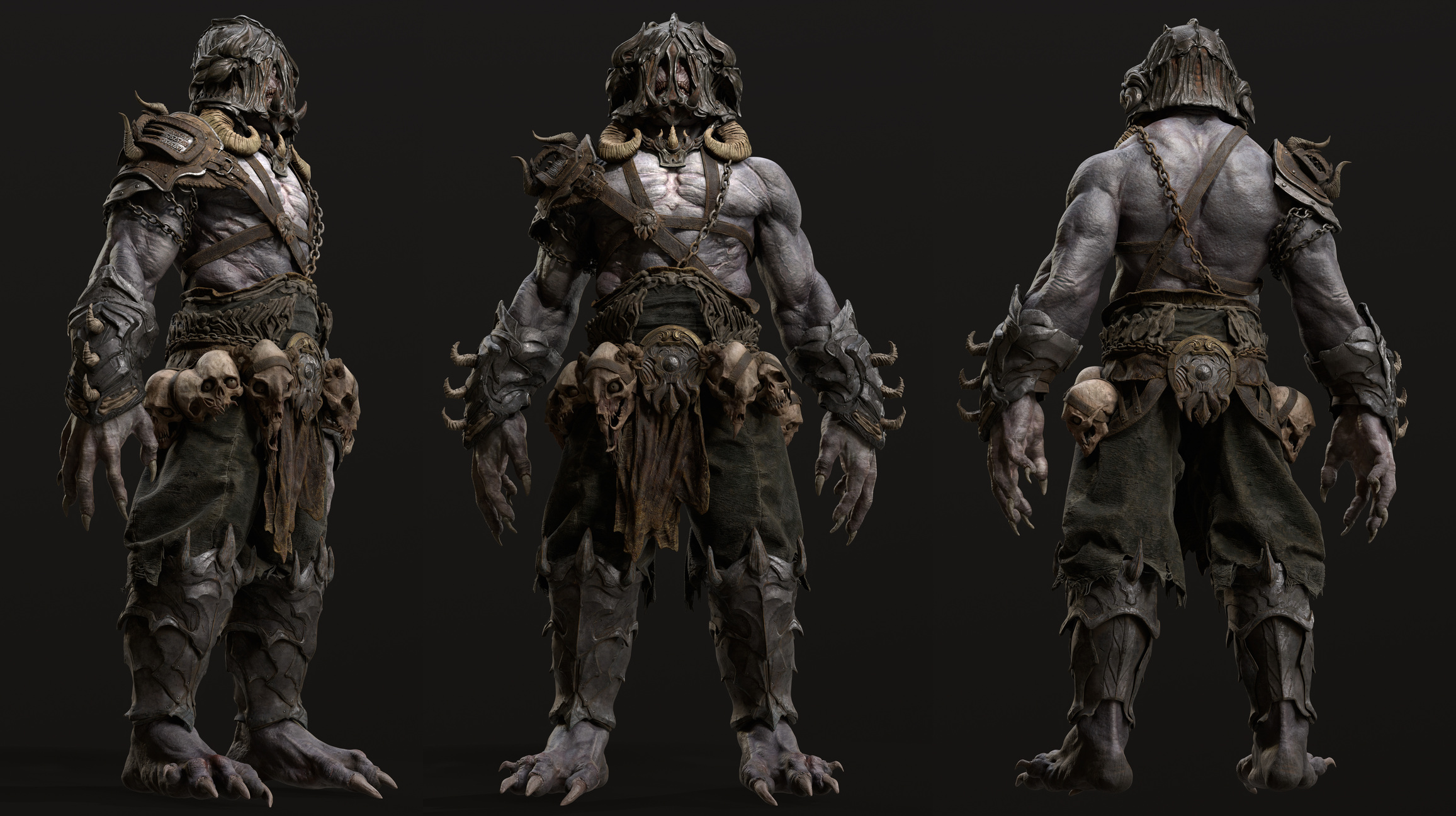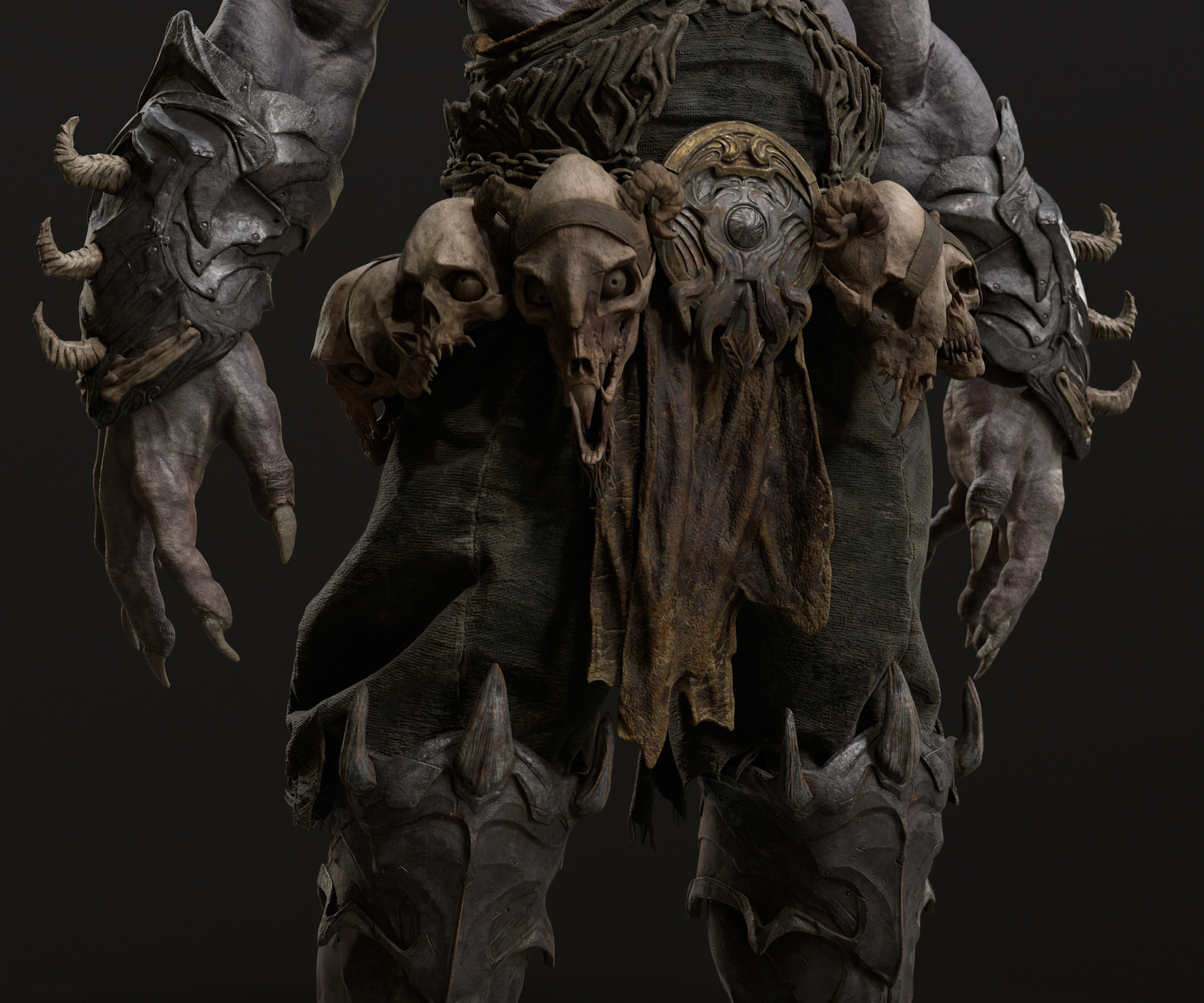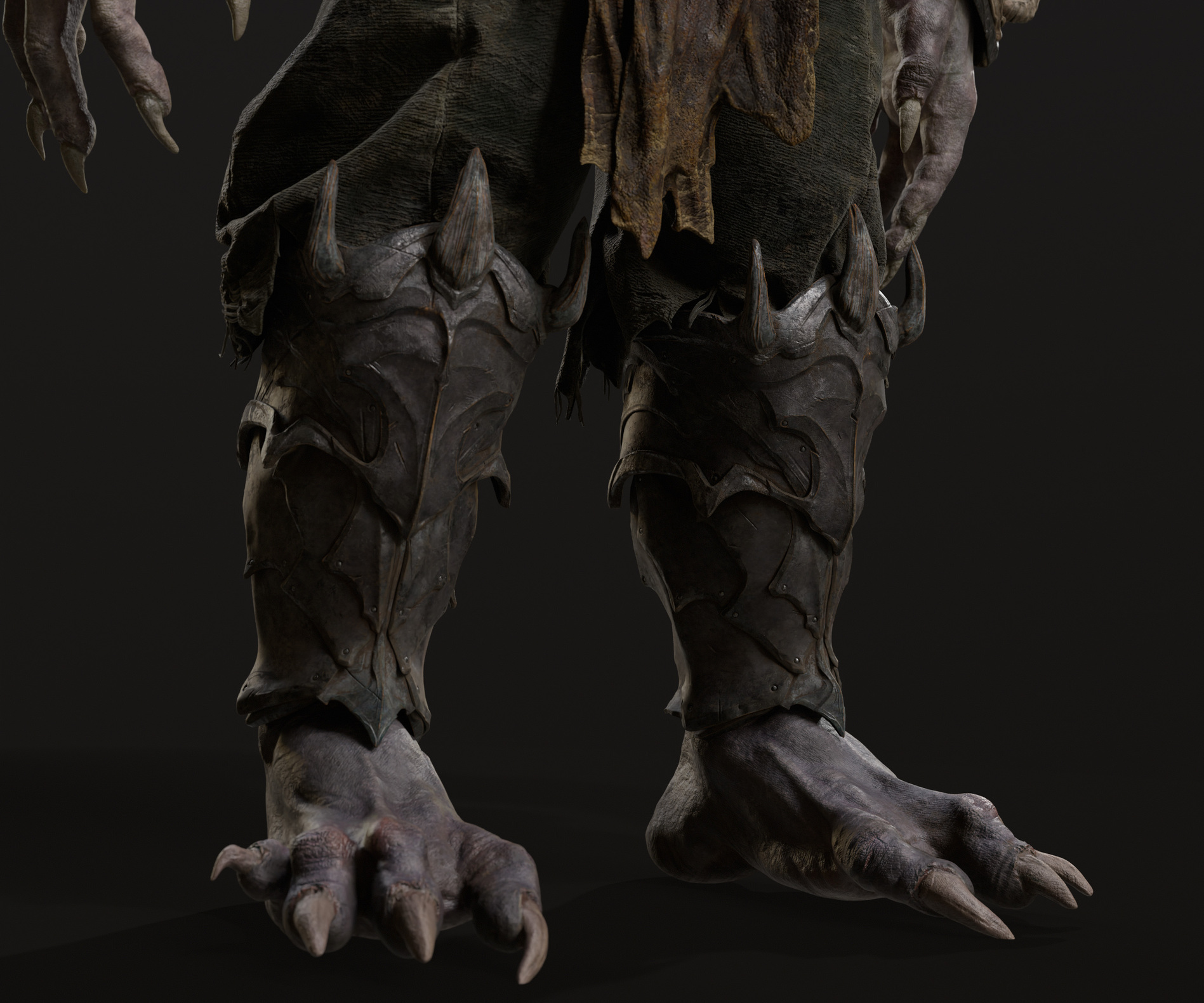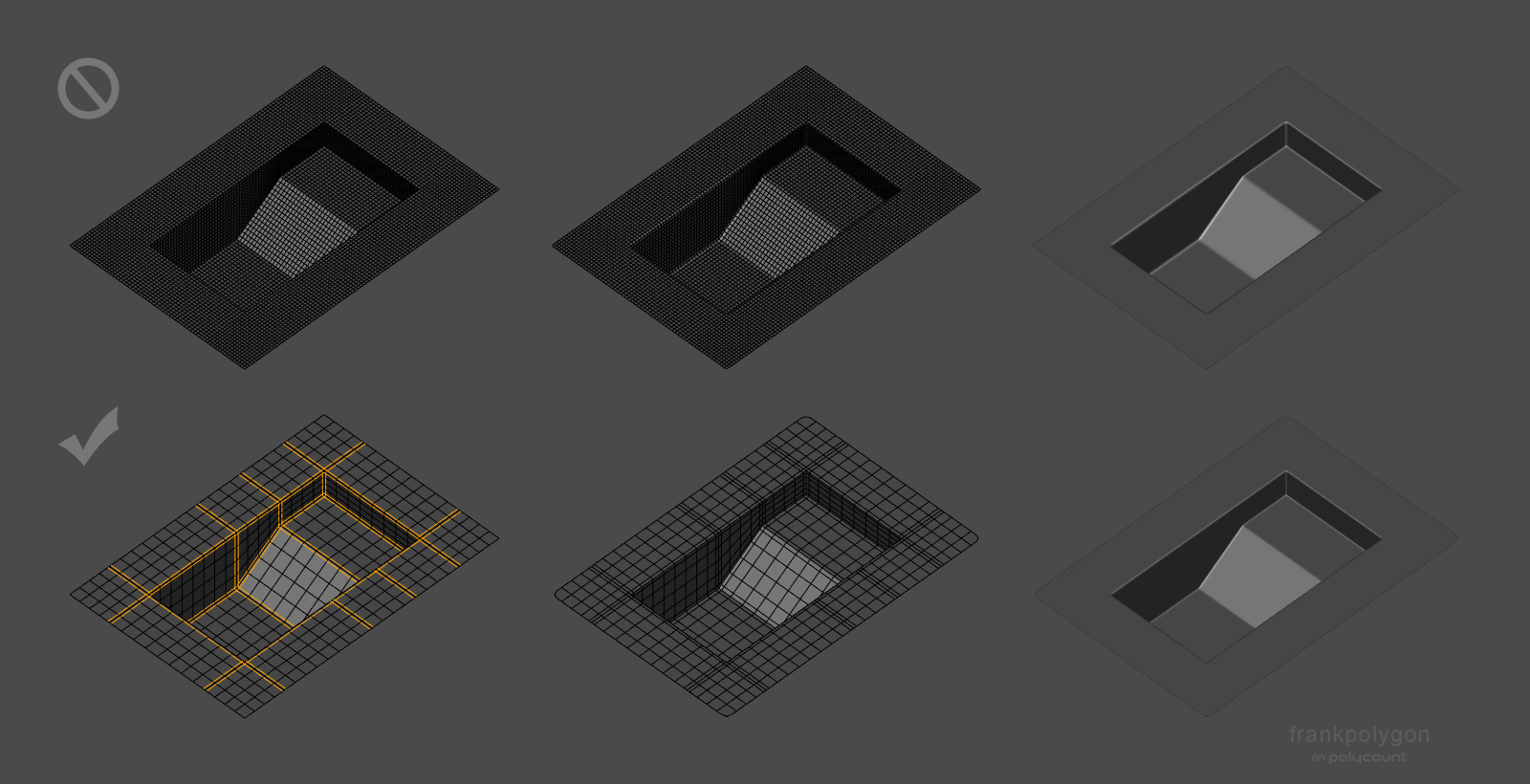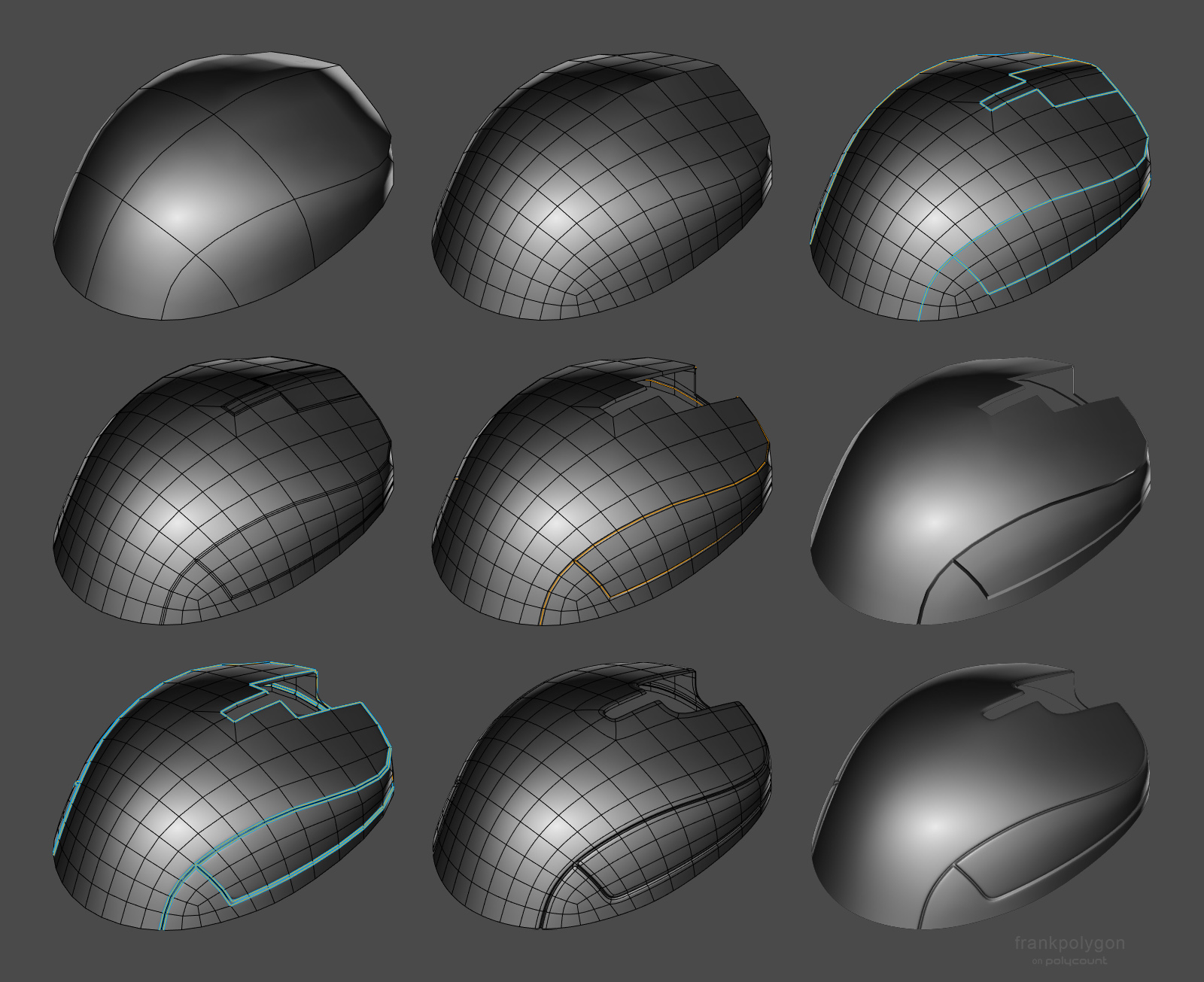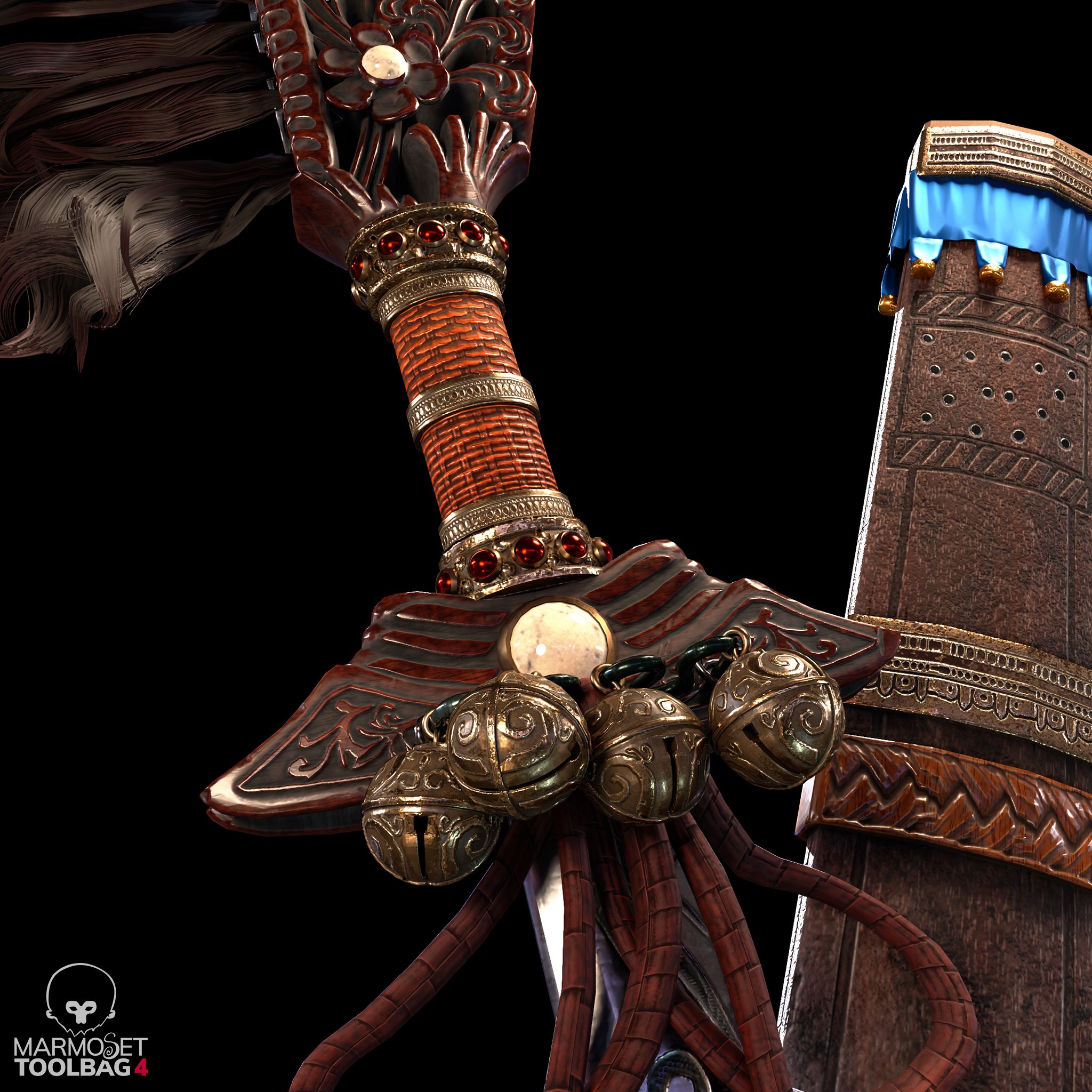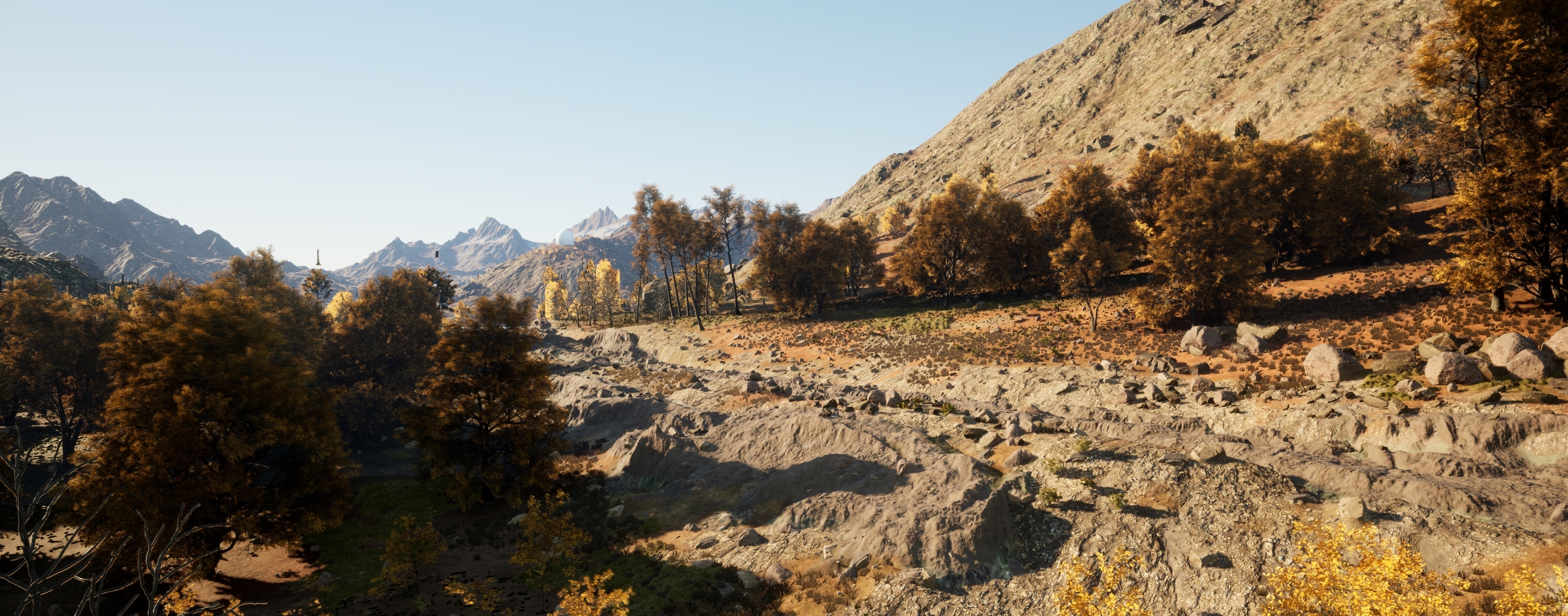It starts May 12, and ends Oct 17. Let's see what you got!
https://polycount.com/discussion/237047/the-brawl²-tournament
Best Of
Warrior Monster
Hi polycount ! I don't usually post here but wanted to share my latest project with you guys
Amazing concept by Fenghua Zhong
I've worked on and off on this project for a long time now. It's the frankensteined result of my own growth and experiments. I am calling it "done" but I'd love to revisit a lot of these things with what I've learned over that time span.
Render in Marmoset 4.
Re: Loops vs Grid
Really good advice here.
To further illustrate Eric's point: pure quad grid topology does tend to have a relatively consistent and dense geometry distribution. Which might not require support loops but can make it difficult to edit the basic shapes and control the edge sharpness. Most base meshes can be simplified by using support loops to concentrate geometry where it's needed and different topology layouts can be used to direct those support loops around the shapes.
Grid topology and support loops aren't mutually exclusive either. There's only so many times the base mesh can be subdivided, to sharpen the edges, before it becomes non-human readable. Which is why support loops are a fundamental part of subdivision modeling.
Support loops can also be used to control the sharpness of subdivided edges, without having to add any new geometry. Wider support loops produce softer edges and narrower support loops produce sharper edges. It's also possible to vary the width of a loop to produce an edge that goes from soft to sharp or vice versa. Something that would be a bit more difficult to do with a dense, quad grid mesh.
Catmull–Clark subdivision basically adds geometry and averages [smooths] the surfaces. So even with traditional subdivision modeling techniques, it's a lot easier to just create the basic shapes, add support loops and let the subdivision do the rest. While there still are a few situations where strict quad grid topology makes sense, most contemporary subdivision modeling workflows have evolved to become more efficient and user friendly.
It's way too easy to get bogged down trying to resolve complex loop flow before establishing all of the major forms. Which is why it can be helpful to focus on creating accurate shapes that flow together, before adding a bunch of support loops that increase the overall complexity of the model. A lot of the manual loop routing work can be automated by using bevel / chamfer modifiers and resolving the topology flow issues early in the block out.
As far as game art goes, it's also possible to bypass a lot of the high poly modeling process by using a boolean re-meshing and edge polish workflow in ZBrush. Though this workflow does have it's own drawbacks in terms of reduced manual editability and generating dense output meshes.
Streamlining a subdivision modeling workflow really comes down to learning the fundamentals then figuring out the tradeoffs and deciding which approach fits best with the specific goals of each project.
Re: Sketchbook: Frank Polygon
It ain't pretty but, in Maya, so far as I know, this may be the best way with the least fuss, to fill it; connect the inside cylinder to the outside with one polygon using the Append to polygon tool; then you can use fill hole to fill in the rest. Then you can delete the one extra edge you'll be left with.
It's possible there's a better way, but opening Maya up to take a look, this is the first way that came to me as a long-time Maya user.
 Joopson
Joopson
Re: How The F*#% Do I Model This? - Reply for help with specific shapes - (Post attempt before asking)
line up the segments of the two cylinders.
 wirrexx
wirrexx
Re: topology for subdivide
The curves in the base mesh subdivide cleanly because both sides of the grooves have the same number of segments. Adding the support loops to the two adjacent splits in the shape below the groove changes the segment spacing on the lower half of the curve. Which does sharpen the corners but also causes them to overlap with the upper half of the curved groove.
There's a few different ways to resolve this kind of smoothing artifact. Deciding which approach makes the most sense will depend on how soft the edges need to be and whether or not the model needs to be split into separate meshes.
If the subdivision model will only be used for rendering then it probably makes sense to keep the relatively tight support loops and mesh splits along the object's parting lines. Since the model's existing topology looks workable: the easiest solution would be to shrink down the outer vertices of the sharpened corners, preferably before adding the support loops.
Moving the corner geometry down compensates for the upward distortion caused by the abrupt change in the segment spacing. This will leave a small gap between the individual meshes but everything will fall in line with the larger curve when the subdivision is applied. How far the corner vertices need to be moved will depend on the shape of the arc, number of segments in the curve and the width of the support loops that are causing the distortion.
Enabling subdivision preview will make it easier to line everything up. It may also be a good idea to constrain any move operations to the edge normals of the surface. This will help prevent the adjustments from disrupting the compound curvature of the underlying surface.
If the subdivision model will only be used as a high poly for baking then it probably makes sense to use looser support loops and it may even be worth merging some of the mesh components to simplify the shapes. A simple block out can be used to establish the topology flow of the larger forms and this can be refined in stages to resolve any potential issues around the smaller shapes. Creases and edge weighted bevel modifiers can be used to preview loop smoothing behavior while working through the topology.
Once the basic loop flow is established, the loop path can be created with a single bevel / chamfer operation or multiple inset operations. The depth of the parting lines can be added by shrinking the middle loop on the path inwards. Final support loops can be generated using an edge weighted bevel modifier. Below is an example of what that process could look like.
Having a continuous base mesh provides some additional options for the topology routing. It's possible to use a 5 sided E pole to direct the flow around the split in the shapes or use a triangular quad to reduce the perpendicular support loops without adding segments to the primary curvature. Here's a close up look at the topology near where the corners meet the top curvature of the parting line.
Support loops can be organized with several different routing strategies but the goal should be to constrain any minor smoothing artifacts to the narrow area between the support loops where it won't be visible. Generating the support loops with an edge weighted bevel modifier means it's possible to adjust the number of segments and width of the support loops as required. Without having to manually re-work each individual loop.
While a continuous mesh can be used to simplify the high poly geometry for baking, it may not be the right choice for every shape. Large, complex objects should generally be broken up into individual components that match the desired fidelity of the in-game model. Splitting a mesh along an object's seam lines also allows each part to have a slightly different polygon density. Which can make it a lot easier to establish seperate topology flows on individual surfaces. Just be sure that the adjacent shapes deform as expected when subdivision is applied and adjust the shape of the base mesh as required.
Recap: Complex objects should generally be broken down into individual parts that are modeled separately. It may be necessary to adjust the shape of separate mesh elements that are adjacent but have mismatched segment counts or additional support loops. Certain shapes can be simplified by merging adjacent shapes. Establishing the topology flow in several different stages can make it easier to create continuous meshes but it can be challenging to plan for every surface detail. Take the time to think about how the subdivision model will be used and optimize workflow decisions around the desired results.
Re: The Bi-Monthly Environment Art Challenge | May - June (78)
Since I likely won't have the time to finish this as I'm going on a trip and working on university stuff, here's the furthest I got with my project.
This was the first time I sculpted and properly baked normal maps, so I'm quite happy that I at least managed to make it this far! I might try to push myself to finish this in the last week of June, but I'm not too confident in managing that.
 PeculiarSana
PeculiarSana
Re: What Are You Working On? (3D) 2022
Happy New Year everyone :) Just sharing this hero prop I made for my 3D environment scene. Thinking of adding it to a complete Character Art, so feedback are still very welcome :) Many thanks!
HD views here : https://www.artstation.com/artwork/aG0mXz
 vivimercado
vivimercado
Re: Show your hand painted stuff, pls!
Hi guys! This is my last project, I hope you like it! thanks! :)
https://www.artstation.com/artwork/qQR8EP
 matheusoliveira
matheusoliveira
Re: Show your hand painted stuff, pls!
Hi all!
My most recent hand-painted project and first of this year :)
https://www.artstation.com/artwork/RngA2E
 andrewmelfi
andrewmelfi
Re: [WIP][UE5] Alps scene
It was a difficult decision, but I still disabled the virtual shadow map in the project due to the fps drop too much when working with such a huge amount of foliage.
But I turned on the distance field shadow for them, the fps increased significantly, without much loss in quality. I guess
this move can help in some project to boost frame rate)
Also. I didn’t have the right moss
model, but I saw broccoli in the store, took a photo scan and added it to the project)
